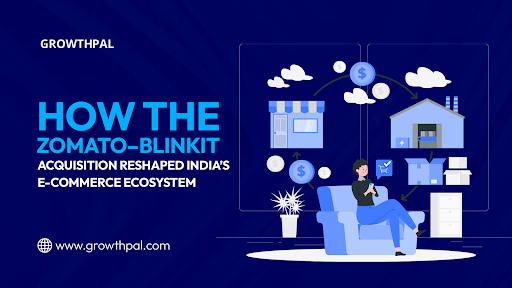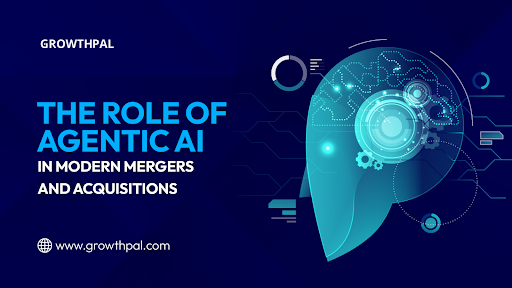The Impact of the Zomato–Blinkit Acquisition on India’s E-Commerce
Discover how the Zomato–Blinkit acquisition accelerated quick-commerce growth, reshaped consumer behavior, intensified competition, and influenced India’s e-commerce future.

India’s e-commerce ecosystem has witnessed rapid evolution in the last decade. From online retail to hyperlocal delivery, the digital consumer market is no longer limited to metro cities or just Tier I audiences. One of the most pivotal events accelerating this transformation was the Zomato acquisition of Blinkit. This merger not only signaled the next phase of consolidation in India’s hyper-competitive quick-commerce space but also reshaped business models, consumer expectations, and investor confidence across the sector.
The Rise of Blinkit and Quick Commerce
Blinkit (formerly Grofers) was one of the early entrants in India’s online grocery delivery space. Founded in 2013, it originally followed a scheduled delivery model. However, facing stiff competition from players like BigBasket and Amazon Pantry, Blinkit pivoted to a 10-minute delivery model, betting big on quick commerce (q-commerce).
This pivot aligned with a growing consumer trend: the demand for instant gratification. Urban consumers, especially millennials and Gen Z, began preferring platforms that delivered essentials almost instantly. Blinkit, with its network of dark stores and a hyperlocal supply chain, gained traction.
However, scaling such a capital-intensive model required deep pockets. Blinkit started bleeding cash and needed urgent funding to survive. Around the same time, Zomato, which was seeking diversification beyond food delivery, saw a strategic opportunity.
Zomato’s Strategic Shift
Zomato, a well-established player in online food delivery, had recently gone public and was under increasing pressure to show profitable growth. While food delivery remained its core business, the company recognized a broader opportunity: to own the last-mile delivery space comprehensively.
The Zomato acquisition of Blinkit was finalized in mid-2022 for approximately $568 million in an all-stock deal. This move was a part of Zomato’s larger ambition to build an ecosystem that served multiple use cases of instant delivery. The acquisition allowed Zomato to enter the quick commerce market with a ready-made infrastructure, saving them years of effort in building it from scratch.
Synergies Created by the Zomato–Blinkit Acquisition
1. Enhanced Last-Mile Delivery Network
The Zomato–Blinkit acquisition led to significant integration of logistics and last-mile operations. Zomato could now use Blinkit’s dark store network for delivering groceries and daily essentials, while also enhancing its own food delivery capabilities during non-peak hours. This synergy increased fleet utilization, reduced delivery costs, and improved margins.
2. Expansion of Use-Cases for Consumers
With Blinkit under its wing, Zomato transformed into more than a food delivery app. It became a one-stop platform for various quick delivery needs ranging from groceries and snacks to electronics and beauty products. This diversification improved consumer stickiness and opened new revenue streams.
3. Cross-Selling and Platform Integration
Zomato integrated Blinkit into its app interface, allowing for seamless cross-selling. For instance, while ordering food, a user could be prompted to add groceries or dessert from Blinkit. This boosted average order value (AOV) and increased engagement time within the app.
4. Data-Driven Personalization
With access to Blinkit’s user data, Zomato gained deeper insights into consumer buying habits beyond food. This expanded dataset enabled Zomato to refine its algorithms for personalized recommendations, dynamic pricing, and inventory management.
Impact on the E-commerce Landscape
1. Acceleration of Quick Commerce
The Zomato acquisition acted as a validation for the quick commerce model in India. Following this deal, other players like Swiggy Instamart, Zepto, and Dunzo accelerated their expansion and funding efforts. Investors began looking at q-commerce not just as a burn-heavy experiment, but as a potential long-term play in India’s urban markets.
2. New Investment Activity and M&A Momentum
The acquisition inspired a wave of mergers and acquisitions in the e-commerce space. Startups with niche delivery capabilities or regional strengths became attractive M&A India targets. The Blinkit acquisition signaled to founders and investors alike that strategic exits were possible, even in challenging market conditions.
3. Consumer Behavior Shift
The most profound impact was on consumer expectations. After the Zomato–Blinkit integration, 10-minute delivery became the norm in metros. Consumers began expecting similar speed not just for groceries, but for electronics, medicine, and even office supplies. This shift forced legacy players to re-evaluate their supply chains and digital offerings.
4. Infrastructure and Policy Evolution
To support ultra-fast delivery, urban infrastructure such as warehousing, zoning policies, and road networks had to evolve. Municipal bodies began considering regulations for dark stores, while logistics providers started investing in micro-fulfillment centers.
Challenges and Criticisms
Despite the optimistic outlook, the acquisition came with its set of challenges:
- Profitability Concerns: Quick commerce remains a cash-intensive model. Although the Zomato acquisition brought operational synergies, sustainability at scale continues to be debated.
- Workforce Strain: The 10-minute delivery promise raised concerns about gig worker safety and labor practices. Zomato had to balance efficiency with ethical delivery norms.
- Over-Reliance on Urban Markets: While the acquisition made sense for metros, replicating the model in Tier II and III cities remained difficult due to lower order density and logistical constraints.
GrowthPal: Enabling Smarter M&A in India’s Digital Economy
As M&A India activity heats up in India’s startup and e-commerce ecosystem, GrowthPal acts as a strategic enabler—connecting businesses with the right acquisition, funding, or exit opportunities. With its data-driven matchmaking platform, GrowthPal simplifies the complex process of mergers and acquisitions, making it faster, smarter, and more efficient for founders, investors, and enterprises alike.
Conclusion: A Blueprint for Future Consolidations
The Zomato acquisition of Blinkit was more than just a business deal—it was a strategic pivot that reshaped India’s e-commerce and quick commerce narrative. By bringing together food delivery and instant grocery under one roof, Zomato not only strengthened its market position but also set a precedent for future consolidations in the ecosystem.
As India’s digital economy continues to grow, the lines between e-commerce, logistics, and tech services will blur further. The Blinkit acquisition highlights how companies can adapt, diversify, and evolve to meet the changing needs of a digital-first consumer base.
For startups and enterprises looking to explore such strategic mergers or acquisitions, platforms like GrowthPal are making it easier than ever to identify the right M&A opportunities in India. Whether you are seeking growth, a strategic exit, or market entry, the future of M&A India is looking brighter and smarter.
Get Started Today and Maximize Your Sales Potential
Ready to unlock your business’s potential? Start tracking, optimizing, and growing with our platform. Sign up today and see your sales soar.




